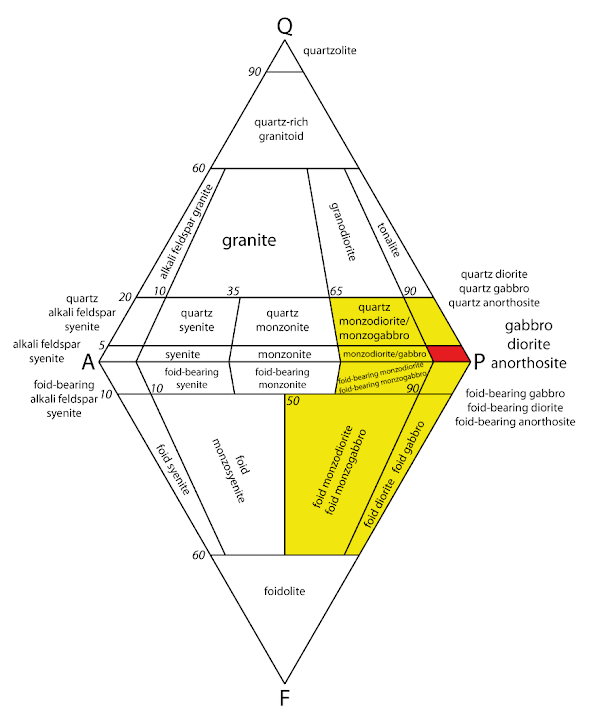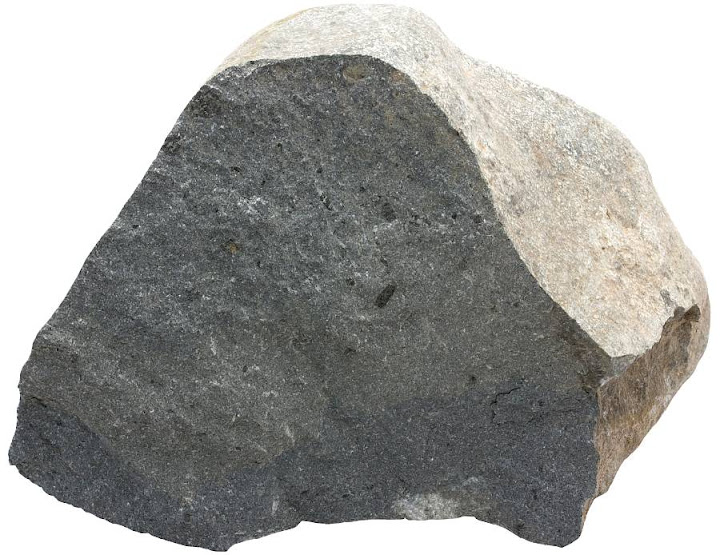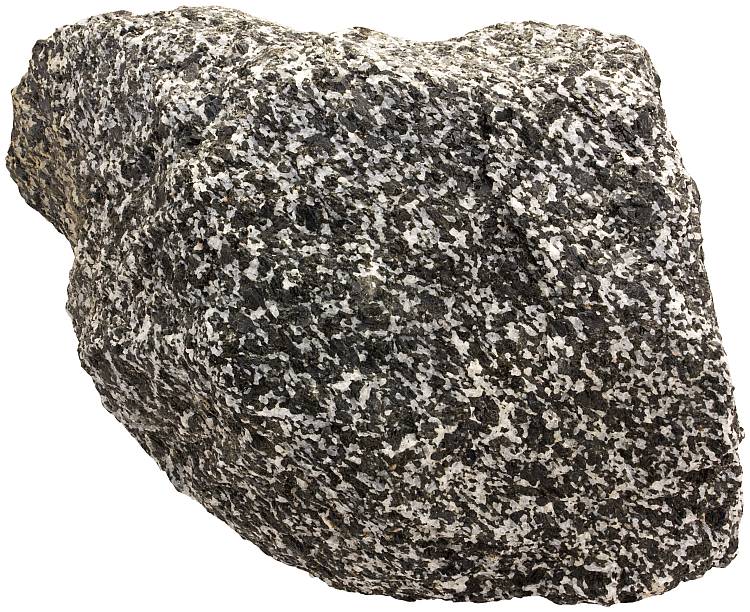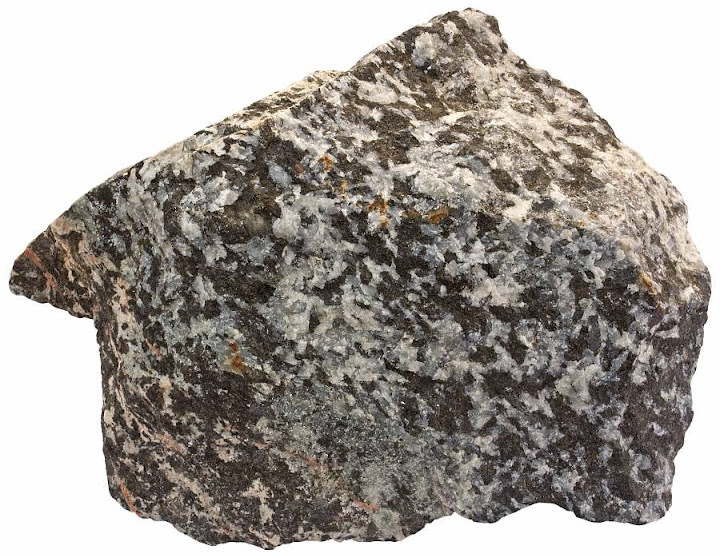Diorite is a plutonic igneous rock with intermediate composition between mafic and felsic rocks. It is visibly crystalline and usually has a granular texture (composed of roughly equally sized crystals) although the appearance may vary widely. Its volcanic (fine-grained) analogue is andesite.

Diorite (red) on the QAPF diagram. Diorite in the wider sense (yellow) includes adjacent fields of quartz diorite, quartz monzodiorite, monzodiorite, foid-bearing monzodiorite (foid is a shorter way to say feldspathoid), foid-bearing diorite, foid monzodiorite, and foid diorite.
Diorite has a strict definition based on the QAPF diagram — more than 90% of feldspar is plagioclase, quartz content is lower than 5% and plagioclase contains more sodium than calcium. The latter distinguishes it from gabbro.
Main minerals are plagioclase (oligoclase, andesine) and hornblende. Plagioclase usually dominates over hornblende and other mafic minerals. It frequently contains smaller amounts of pyroxene (usually augite but also orthopyroxene), biotite, quartz, olivine, and magnetite. Accessory minerals include apatite, sphene (titanite), ilmenite, zircon, etc.
Similar rocks are gabbro (pyroxene-plagioclase rock, contains more mafic minerals and plagioclase is calcic), monzodiorite (contains more alkali feldspar) and quartz diorite (contains 5-20% quartz). Granodiorite and tonalite are granitoids that contain more than 20% quartz.
Average chemical composition, determined by 872 chemical analyses of dioritic rocks1 (numbers are mass percents, recalculated volatile-free to total 100%):
SiO2 — 58.34
TiO2 — 0.96
Al2O3 — 16.92
Fe2O3 — 2.54
FeO — 4.99
MnO — 0.12
MgO — 3.77
CaO — 6.68
Na2O — 3.59
K2O — 1.79
P2O5 — 0.29
Diorite is usually associated with subduction zones. It may be a product of partial melting of mafic protolith, but it may also form as a result of mixing between mafic melt and felsic country rocks. It occurs in both continental and oceanic crust and is not a rare rock type, but it is significantly less common than granite and other granitoids. Diorite may form larger plutons, but it often forms smaller magma bodies like sills, dikes and stocks.
It is used as a dimension and building stone, but not very widely because of limited supply. Diorite is usually known by the name black granite (it is not the only rock type named so) although geologically they are different rocks.
Diorite may not be easy to distinguish from similar rocks. Amphibolite is a metamorphic rock with roughly the same composition. Leucocratic gabbro may look alike and also all kinds of altered mafic rocks may create lots of confusion. See the images below.

Typical diorite has roughly equally sized black (mostly hornblende) and white (sodic plagioclase) crystals. Plagioclase usually dominates over mafic minerals. Width of sample 8 cm.

Diorite inclusion in granodiorite. Sierra Nevada, California. Length of the inclusion 10 cm.

Diorite with tonalite pegmatite. Hannukainen, Finland. Width of sample 9 cm.

Sample from Hannukainen, Finland. Width of sample 8 cm.

Uralite porphyrite is compositionally similar rock. It is an altered andesite (volcanic analogue of diorite and hence has much finer grain size). Uralite is a name given to secondary hornblende (or actinolite) phenocrysts. Ylinen Savijärvi, Finland. Width of sample 9 cm.

This sample has some resemblance, but contains too much quartz. It is quartz diorite. Narvik, Norway. Width of sample 8 cm.

This rock sample contains even more quartz (gray mineral) which makes it granitoid (tonalite). Kaatiala, Finland. Width of sample 10 cm.

Salt and pepper appearance and the mineralogy is also just right: hornblende with plagioclase, but it is not diorite. This rock sample is metamorphic, not igneous. It is amphibolite. Senja, Norway. Width of sample 9 cm.

Another very similar rock, but here the light-colored mineral is scapolite (marialite), not plagioclase. It is a metamorphosed gabbro (metagabbro or more specifically hornblende-scapolite rock). The original pyroxene-plagioclase assemblage has been hydrothermally altered to hornblende-scapolite assemblage. Ødegården Verk, Norway. Width of sample 13 cm.

Leucocratic norite (gabbroic rock where the mafic mineral is orthopyroxene) may be similar too. Rogaland, Norway. Width of sample 11 cm.
References
1. Best, Myron G. (2002). Igneous and Metamorphic Petrology, 2nd Edition. Wiley-Blackwell.
Leave a Reply